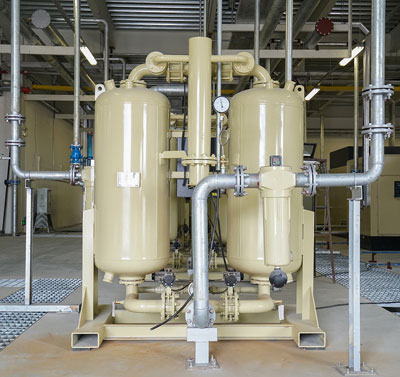Most conversations about spindle maintenance and repair revolve around lubrication.
On its face, this makes sense: bearings are one of the most important parts of any CNC spindle, and bearings require lubrication to function properly. Failure to properly lubricate bearings will lead to equipment failure and all that that entails — repair costs, manufacturing downtime, and so on.
In spindle repair circles, however, there’s something that we refer to as the silent killer of spindles, and it isn’t improper lubrication. We’ll give you a hint: drier is better.
Proper Air Supply for Spindles
 That’s right, air supply is a CNC spindle’s secret menace — or, rather, a contaminated air supply.
That’s right, air supply is a CNC spindle’s secret menace — or, rather, a contaminated air supply.
What we have found is that, because so much emphasis is put on bearing health, other aspects of spindle health are talked about less often. This leads to those other issues becoming more prominent.
This inverse relationship means that poor air quality, be it particulate contamination or elevated moisture content, is the leading cause of unexpected, premature spindle failure. In fact, air supply contamination actually accounts for about 80% of all spindle failures.
Some of these air-related failures are caused by external contaminants, such as grinding swarf of coolant particles, but a larger number of them can be traced directly back to the spindle operator.
A Case Study
A Pennsylvania-based automotive parts manufacturer, running Bryant High Speed ID grinding spindles in 24/7 production, was experiencing a high failure rate — about 40 in 2016. They brought us on to diagnose the failures and lower their rates.
We worked closely with them to track and trend their spindle failures, not just by spindle serial number but also by the machine tool serial number that the spindle was deployed in. What we found was that out of all their failures, 80% of them — exactly the industry average — were caused by a contaminated air supply. In particular, their air was too moist.
We recommended that they install an air drier, specifically a three-cell drier that has 1/3 more capacity than their system requires: this way, a cell can be out of service for repair or cleaning at any time without impacting the drier’s performance.
The manufacturer made our suggested air supply system updates and saw their failure rate plummet by 50%.

